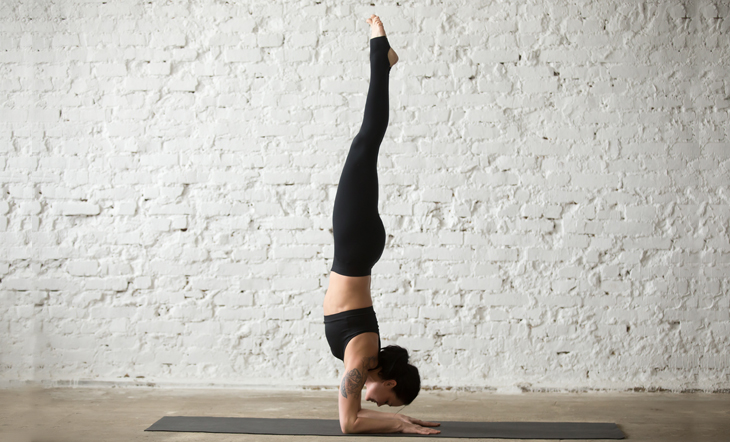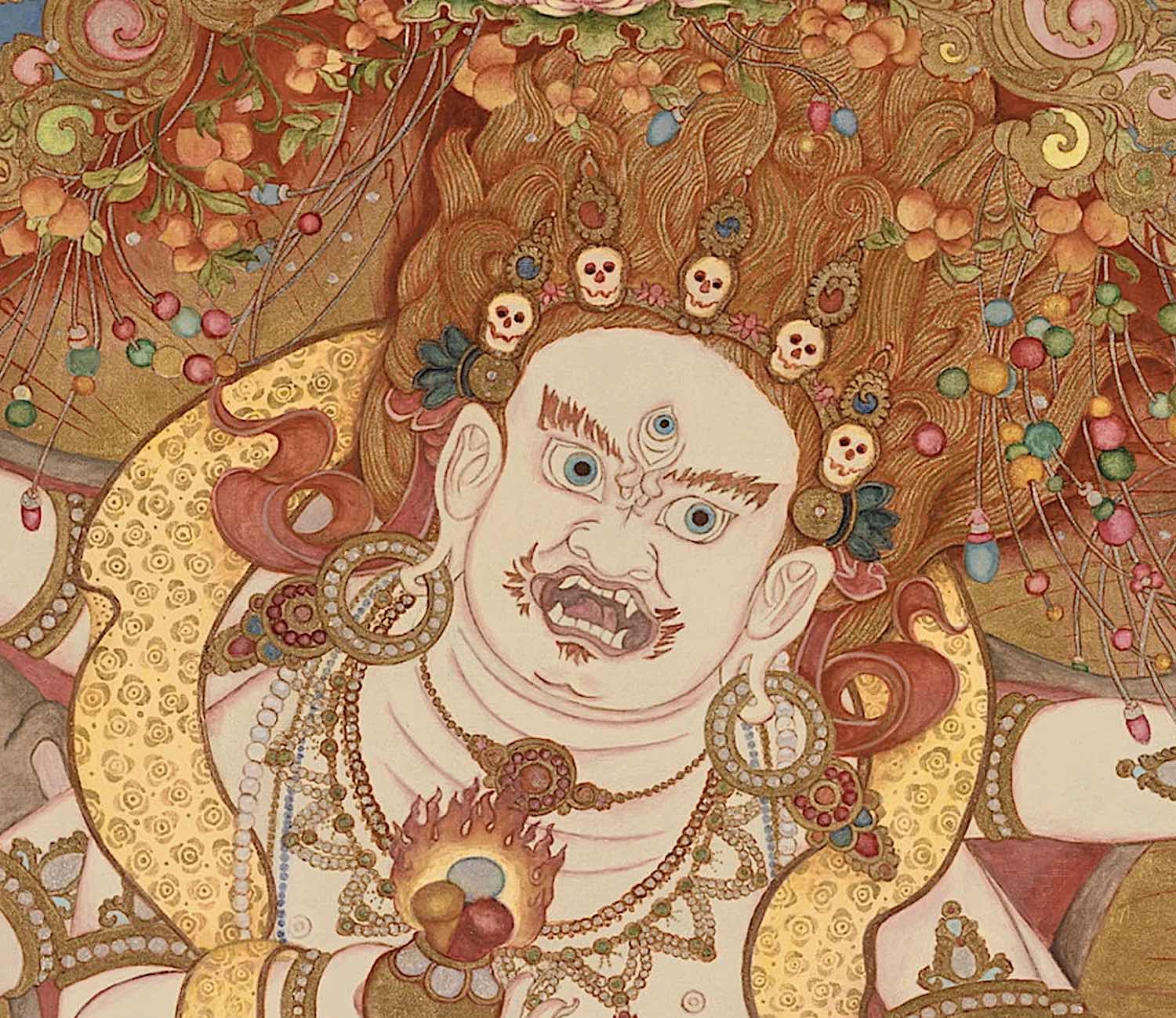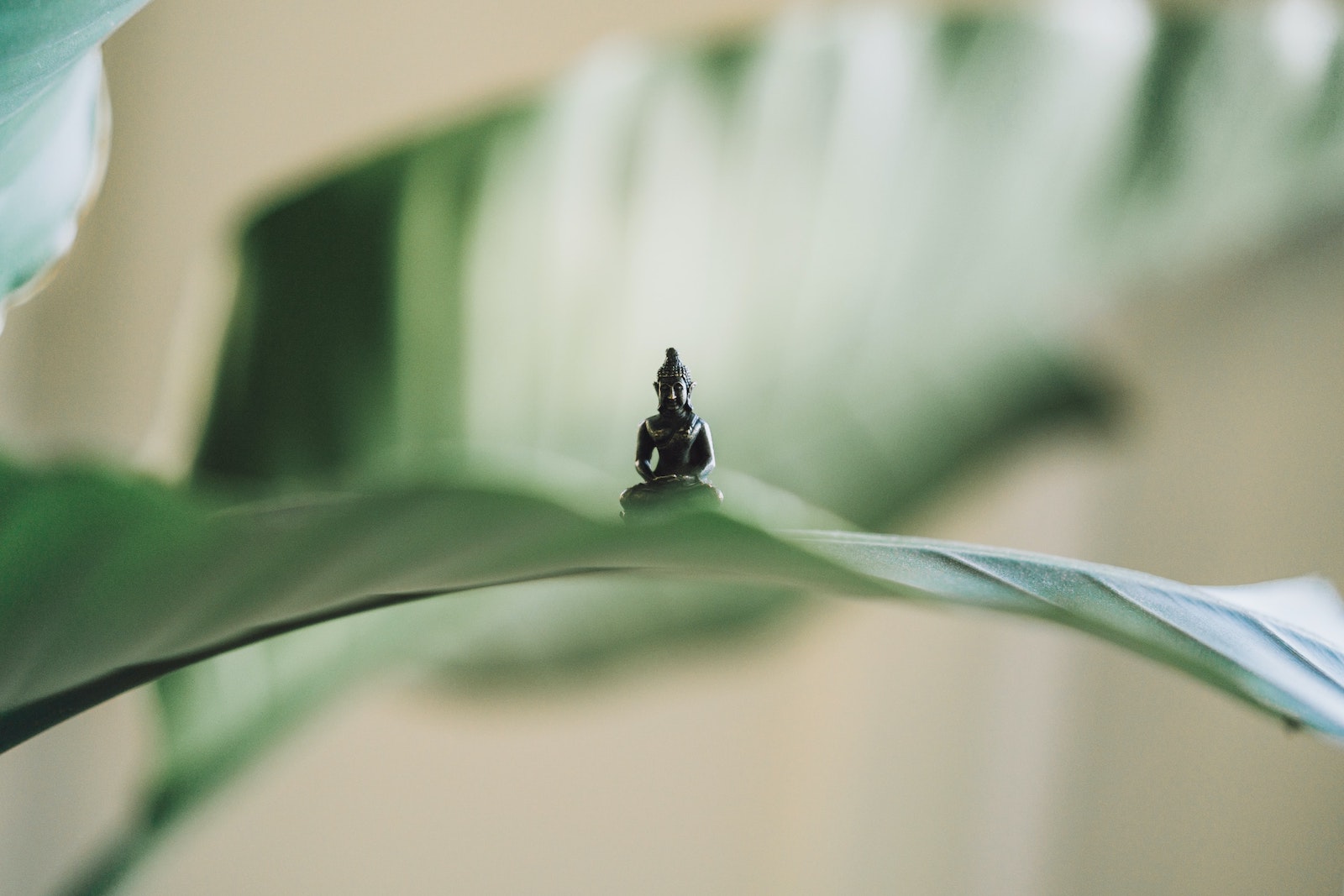Pranayama Power: Breathe Your Way to Well-being
The post Pranayama Power: Breathe Your Way to Well-being appeared first on The Yoga Nomads.

If you’ve been to a few yoga classes, you’ll know just how vital breath control is.
But do you understand WHY it is so crucial?
Why do yoga instructors keep reminding you to breathe? And why are they so obsessed with guiding your inhalations and exhalations?
Well, by exploring ancient texts like the yoga sutras, we can discover how non-negotiable breath control is when holding Warrior 2 or Tree Pose.
In this article, we’re diving into yogic breathing, revealing its numerous benefits for the body, mind, and soul (and the research studies that support them). I’ll then share my top 4 pranayama exercises and some additional tips for getting started with yoga breathing!
What is Pranayama?
Pranayama is the fourth limb in the Ashtanga Eight Limbs Of Yoga system. As pranayama comes after asana practice and before meditation, it is a bridge between yoga’s physical and spiritual aspects.
Pranayama refers to breathing practices that calm the mind and relax the body, setting the stage for deeper meditation practices. It is about becoming aware of and controlling your breath to promote mental and physical well-being.
Here’s how…
The Sanskrit word prana means “life energy,” and it is believed that harnessing the breath can influence the flow of prana. Yogic breathing exercises increase prana flow throughout our body, breaking up any emotional blockages or stagnation.
Ancient yogis believed practicing pranayama techniques could help you enter higher states of consciousness. Another belief is that pranayama practice is the secret ingredient to a longer life. Manipulating your breath can reduce oxygen intake (something science confirmed in a control group of mice), which could significantly increase your life span.
Pranayama’s Health Benefits

But pranayama is not just an ancient concept; it is scientifically proven to promote better health and wellness.
From boosting lung function to promoting concentration, here’s why everyone (not just yogis) should practice yoga breathing.
Boosts Cognitive Functions
Researchers have found that our breathing patterns determine our neural activity, impacting our cognitive functioning. Practicing pranayama pumps more oxygen into your brain, removing mental fog and enhancing focus and memory recall.
One neuroscience study examined the effect of pranayama on stroke patients. The control group reported feeling more alert and sharp after practicing yoga breathing.
So, to replace your afternoon coffee with a healthier alternative, try a few breathing exercises during your lunch break!
Calms the Nervous System
Pranayama practice doesn’t just calm the mind but also the nervous system. Practicing breathing exercises sends signals to the parasympathetic nervous system, which stimulates the vagus nerve, slows the heart rate, and lowers high blood pressure.
This is another science-backed benefit. In a recent study published in Frontiers in Physiology, participants who took deep breaths and exhaled slowly saw significant drops in their blood pressure readings.
Therefore, pranayama can help us manage our stress responses, keep our blood pressure in check, and reduce the risk of cardiovascular disease.
Enhances Respiratory Efficiency
Of course, pranayama also has beneficial effects on the lungs and the heart. Breathing exercises can boost lung capacity and respiratory function, which helps to keep respiratory diseases at bay.
In a systematic review of chronic obstructive pulmonary disease treatment, researchers found pranayama is an adjunct treatment for this respiratory disease. The results from a 3-month interventional group revealed that breathing exercises can medically stabilize individuals with moderate to severe COPD.
Balances Energy Levels
As mentioned, pranayama practices can serve as a mental and physical pick-me-up. Breathing techniques can increase your energy levels while reducing energy spikes throughout the day.
How?
Well, pranayama increases energy flow in the energy channels (chakras) while removing carbon dioxide and sending a fresh supply of oxygen to the brain, fueling brain cells.
As breath control cleanses the chakras, it also has a significant improvement in shifting negative emotional states like anxiety and depression.
Improves sleep quality
Finally, pranayama is a wonderful way to wind down at night and increase sleep quality. Its de-stressing, blood pressure-lowering, and mentally calming qualities can help reduce insomnia and increase restfulness at night.
Research studies have also found that breathing exercises effectively prevent fatigue by reducing sleep disturbances in breast cancer patients.
Types of Pranayama Practices
While all pranayama practices have beneficial health effects, the type of breathing exercise you practice will determine the extent of the benefits. For example, some breathing exercises are calming while others are energizing.
Let’s look at the most popular techniques and their unique purpose.
Nadi Shodhana (Alternate Nostril Breathing)
 Nadi Shodhana, or alternate nostril breathing, is my go-to pre-bed mindfulness practice.
Nadi Shodhana, or alternate nostril breathing, is my go-to pre-bed mindfulness practice.
This calming pranayama restores balance in the nervous system and slows activity in the mind. It balances the left and right brain hemispheres, which, in turn, increases parasympathetic tone and decreases sympathetic activity.
The technique involved alternating airflow through each nostril. You use your right thumb to close your right nostril and your right ring finger to close your left nostril. You then rest your index and middle fingers on your forehead.
Inhale slowly and deeply through your left nostril while closing your right nostril with your thumb. Switch to closing your left nostril with your ring finger and exhale slowly through your right nostril. Continue this pattern, alternating nostrils for inhales and exhales. Repeat for a few minutes.Here is an easy to follow guided Nadi Shodhana practice to help you learn the technique.
Kapalabhati (Skull Shining Breath)

Kapalabhati means ‘skull shining breath.’ This energizing practice wakes you up better than your morning coffee by boosting your energy, improving digestion, and cleansing your lungs.
The technique involves creating rapid abdominal contractions with each short, sharp exhale. The inhale becomes passive and fast.
Inhale passively, then exhale forcefully through your nose by contracting your abdominal muscles. Focus on a quick, powerful abdomen pump, pushing air out. Relax your abdomen for a passive but short inhalation. Establish a rhythmic pattern and repeat for a few minutes, focusing solely on the exhalation.See the Kapalabhati technique in action here.
Bhramari (Humming Bee Breath)
Bhramari is a breathing technique that sounds like the hum of a bee. It is an incredibly soothing pranayama that promotes inner peace through the sound vibrations it produces.
The technique involves partially closing the ears to calm the mind and balance the nervous system. I like to practice this pranayama at the end of my asana practice as it helps me enter a deep meditative state.
Gently press your index fingers against the cartilage of your ears, just above the earlobes. This closes off the ears and creates the vibrational effect. Inhale deeply and slowly through your nose, filling your lungs with air. As you exhale, make a steady, low-pitched humming sound like a bee, drawing the sound from the back of your throat. Keep your mouth closed and focus on the sensation of the vibration in your head. Continue for several breaths.Here is a helpful video for those seeking a visual explanation of the humming bee breath.
Ujjayi (Ocean Breathing)
Ujjayi sounds like ocean waves and is the best pranayama practice for focusing the mind and clearing repetitive thoughts. It also builds heat in the body and eliminates toxins.
Ujjayi breathing is commonly used in yoga practice to prevent fatigue and keep the mind focused on the physical poses.
The technique involves constricting the throat, which creates the sound of waves.
Inhale deeply through your nose, expanding your abdomen and chest. Exhale through your nose with a slight throat constriction, creating an audible hissing or ocean-like sound, like fogging a mirror. Practice for a few minutes, aiming for equal, smooth inhalations and exhalations.Give this guided Ujjayi practice a go.
Key Considerations When Starting A Pranayama Practice

Here are some final tips for getting the most from pranayama:
Start with simpler techniques
First, learn to practice abdominal breathing (Diaphragmatic breathing), which will teach you to take slower, fuller breaths. Then, the first pranayama I typically teach is alternate nostril breathing as it is gentle and straightforward to learn.
Set up your space
Ensure you’re in a quiet space where you won’t be disturbed. Invest in a proper meditation cushion or bolster to promote good posture and spinal health. I particularly like how the Seat Of Your Soul Meditation Cushion elevates your hips to straighten the spine and allow more oxygen into your lungs.

Seat Of Your Soul Meditation Cushion – 10 Colors Round Yoga Pillow; Zipper Organic Cotton Zafu...
Seek guidance
While you can practice basic breathing exercises at home, I recommend attending some classes and workshops to ensure you do the proper technique. Consulting with a qualified yoga instructor will also provide valuable insights to advance along your pranayama journey.
Keep learning
Aside from attending classes, studying pranayama will enhance your understanding of this yogic concept. I found Light on Pranayama by B.K.S. Iyengar, a comprehensive yet easy-to-read book on this part of the yoga sutras.

Light on Pranayama: The Definitive Guide to the Art of Breathing
Be consistent
Remember, consistency is key to experiencing the profound benefits that this ancient practice has to offer. So rather than do a one-hour practice once a week, aim for 5 minutes of practice every day.
When to Practice
The type of breathing technique you do will determine the best time of day to practice. For example, calming pranayamas are best suited in the evening or after yoga practice. Meanwhile, energizing breathing exercises are ideal for the morning or before yoga class or exercise.
Still, many yogic masters recommend practicing pranayama during the early morning hours. This period, known as Brahma Muhurta in Ayurveda, occurs approximately 1.5 hours before sunrise. It is considered ideal for meditation or yoga due to its peacefulness, fresh air, and low pollution level.
How Long to Practice For
For beginners, start with 5-10 minutes daily (or less if you do a heating practice like Kapalabhati). You can then gradually increase the duration as you become more comfortable with the practice.
Stop if you feel lightheaded, dizzy, or nauseous. Always listen closely to your body’s signals, and never force a breath pattern that feels uncomfortable.
Final Thoughts on Pranayama Breathing Techniques
While pranayama is as old as the yoga sutras, modern-day science continues to prove its magnificent effects on health and wellness. From studies on high blood pressure to a control group of cancer patients, it seems like pranayama is a yogic tool for everyone and anyone.
Moreover, you can practice the gentle breathing exercises featured in this guide without being physically fit or super flexible. So, what’s stopping you from experiencing the magical results of controlled breathing for yourself?
FAQs
Do I need any special equipment for pranayama?
You don’t need any special equipment to practice pranayama; however, a comfortable mat or cushion will help maintain proper posture during the exercises. I also recommend comfortable clothing that does not restrict breathing.
Can beginners try all types of pranayama?
Beginners should start with basic techniques like deep abdominal breathing before progressing to more advanced forms of pranayama. Some practices may require guidance from an experienced teacher, especially if they involve breath retention or rapid breathing.
Is it safe for pregnant women to do pranayama?
Pregnant women should consult their healthcare provider before starting any new exercise regimen, including pranayama. Certain gentle breathing practices may be beneficial during pregnancy but should only be done under professional supervision.
Can practicing pranayama help with stress management?
Yes, many people find that regular practice of calming pranayamas reduces stress levels due to their calming effect on the nervous system.
Are there any contraindications for practicing pranayama?
People with cardiac issues, respiratory infections, or other severe health conditions should consult their doctor before beginning a pranayama practice. Some techniques might be unsuitable for some, so professional guidance can help determine what’s safe.

 Troov
Troov 































